 It’s day three of Ginvent and we’ve hit our first strange gin – Pickering’s limited edition Brussels sprout gin. To celebrate the Christmas season, they have released six festive flavours: cranberry, figgy pudding, plum & ginger, spiced pear & cinnamon, clementine, and today’s flavour Brussels sprout. Using their classic gin as the base spirit, they distil their gin in their copper still Gertrude and they say this results in a herbaceous finish with bright green pepper notes. Matt, the co-founder and head distiller at Pickering’s, found 10,000 sprouts in January to make this gin, which shows how long in the making a new gin flavour can be. Mixed with classic tonic, they suggest adding a slice of cucumber as a garnish, or making it into their “love it or hate it” cocktail with fresh cucumber, lime, orange bitters and elderflower tonic.
It’s day three of Ginvent and we’ve hit our first strange gin – Pickering’s limited edition Brussels sprout gin. To celebrate the Christmas season, they have released six festive flavours: cranberry, figgy pudding, plum & ginger, spiced pear & cinnamon, clementine, and today’s flavour Brussels sprout. Using their classic gin as the base spirit, they distil their gin in their copper still Gertrude and they say this results in a herbaceous finish with bright green pepper notes. Matt, the co-founder and head distiller at Pickering’s, found 10,000 sprouts in January to make this gin, which shows how long in the making a new gin flavour can be. Mixed with classic tonic, they suggest adding a slice of cucumber as a garnish, or making it into their “love it or hate it” cocktail with fresh cucumber, lime, orange bitters and elderflower tonic.
gin and tonic
Ginvent 2019 – Dartmouth Navy Strength gin
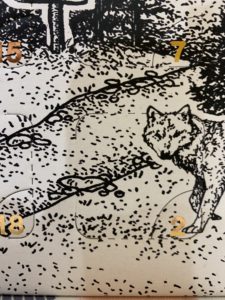 Day two of Ginvent brings me something I’m rather excited for. Last year we tried Dartmouth gin for the first time, and I am a big fan. Today, we are trying their navy strength version. Their original gin mixes juniper with floral and spiced notes, and the navy strength version uses a new recipe as well as the new ABV of 57%. The Naval link is deeply ingrained in the brand, their families having centuries of maritime history and this gin takes that inspiration a step further. They amp up the juniper and bring lime in at the front – presumably to fight off the scurvy – alongside loads of spice power from grains of paradise, star anise, cardamom and cubeb.
Day two of Ginvent brings me something I’m rather excited for. Last year we tried Dartmouth gin for the first time, and I am a big fan. Today, we are trying their navy strength version. Their original gin mixes juniper with floral and spiced notes, and the navy strength version uses a new recipe as well as the new ABV of 57%. The Naval link is deeply ingrained in the brand, their families having centuries of maritime history and this gin takes that inspiration a step further. They amp up the juniper and bring lime in at the front – presumably to fight off the scurvy – alongside loads of spice power from grains of paradise, star anise, cardamom and cubeb.
Ginvent 2019 – Conniption Navy Strength Gin
 Happy first day of Ginvent! Here we are for my fourth year and kicking off the festivities with Conniption Navy Strength gin. Hailing from the Durham Distillery, this gin isn’t from the Durham of Cathedral fame, instead they are based in Durham, North Carolina. We’ll take a short detour here to talk about American gins as they have some different rules over the sea. Here in the UK, to be gin the flavour must be “predominantly” juniper with a minimum ABV of 37.5%. In the USA, gins have to be “characteristically” juniper and a minimum of 40% ABV. This means their gins have a different feel as the juniper is less obvious (at least in the American gins I’ve tried previously) which allows them to play with their flavour profile a bit more. Now we have that out the way, the distillery uses a two step process to create their gins. First they perform a traditional distillation in a copper pot, then they move on to a more modern vacuum distillation for their more delicate botanicals. Their original gin uses cucumber and honeysuckle to create a fresh and floral finish, and usually when a brand creates a navy strength gin they tend to just amp up their recipe. Here, they share just three botanicals but add sweet citrus and fig and raises the ABV to 57%. They have won a number of awards, most recently winning the Best American Navy Strength gin at the 2019 World Gin Awards and before that a double gold (pretty impressive) at the 2017 San Francisco World Spirits Competition. So, how does it taste?
Happy first day of Ginvent! Here we are for my fourth year and kicking off the festivities with Conniption Navy Strength gin. Hailing from the Durham Distillery, this gin isn’t from the Durham of Cathedral fame, instead they are based in Durham, North Carolina. We’ll take a short detour here to talk about American gins as they have some different rules over the sea. Here in the UK, to be gin the flavour must be “predominantly” juniper with a minimum ABV of 37.5%. In the USA, gins have to be “characteristically” juniper and a minimum of 40% ABV. This means their gins have a different feel as the juniper is less obvious (at least in the American gins I’ve tried previously) which allows them to play with their flavour profile a bit more. Now we have that out the way, the distillery uses a two step process to create their gins. First they perform a traditional distillation in a copper pot, then they move on to a more modern vacuum distillation for their more delicate botanicals. Their original gin uses cucumber and honeysuckle to create a fresh and floral finish, and usually when a brand creates a navy strength gin they tend to just amp up their recipe. Here, they share just three botanicals but add sweet citrus and fig and raises the ABV to 57%. They have won a number of awards, most recently winning the Best American Navy Strength gin at the 2019 World Gin Awards and before that a double gold (pretty impressive) at the 2017 San Francisco World Spirits Competition. So, how does it taste?
Lakes gin
Note: The team at The Lakes Distillery sent me a sample of their new recipe to try, but as always I’ll let you know what I really think.
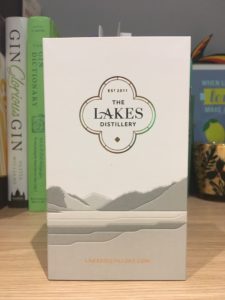 Back in February 2017, I was sent a sample of Lakes gin to try. Then, on my 30th birthday (10 October 2019 FYI) I received an email from the team saying they had reworked the recipe and had a beautiful rebrand to boot. After launching their single malt whisky, they have looked back at their gin and worked on it to ensure it stands the test of time. They’ve adopted a ‘less is more’ approach and now take a British wheat spirit as their base, and infuse in this their new range of botanicals; juniper and coriander are bound with angelica, orris root, cassia bark and liquorice before finishing with orange and lemon peel. They steep these in the spirit overnight to release the essential oils before distilling their gin in a copper pot still. Their rebrand reminds me of Mermaid gin, which was a great product in a fairly bland bottle; they get a jazzy new bottle and suddenly everyone takes notice. The new Lakes gin bottle features a new, leaner shape, an engraved glass bottle and a new label. The new recipe has also ramped up the ABV from 43.7% to 46%, hopefully ensuring the juniper is still front and centre. So, how does it compare?
Back in February 2017, I was sent a sample of Lakes gin to try. Then, on my 30th birthday (10 October 2019 FYI) I received an email from the team saying they had reworked the recipe and had a beautiful rebrand to boot. After launching their single malt whisky, they have looked back at their gin and worked on it to ensure it stands the test of time. They’ve adopted a ‘less is more’ approach and now take a British wheat spirit as their base, and infuse in this their new range of botanicals; juniper and coriander are bound with angelica, orris root, cassia bark and liquorice before finishing with orange and lemon peel. They steep these in the spirit overnight to release the essential oils before distilling their gin in a copper pot still. Their rebrand reminds me of Mermaid gin, which was a great product in a fairly bland bottle; they get a jazzy new bottle and suddenly everyone takes notice. The new Lakes gin bottle features a new, leaner shape, an engraved glass bottle and a new label. The new recipe has also ramped up the ABV from 43.7% to 46%, hopefully ensuring the juniper is still front and centre. So, how does it compare?
Wessex Alfred the Great Gin
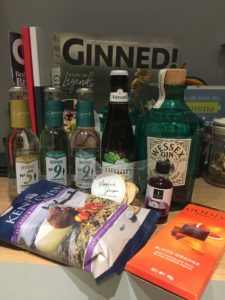 It’s September which means it is Craft Gin Club delivery time again! This month’s gin comes from Wessex Gin (along with a host of goodies including my fave cardamom tonic from Peter Spanton). Gin distilling is not a new venture for the founder of Wessex Gin, Jonathan Clark. Jonathan was the founder of the City of London Distillery (about 5 mins from my office, see my thoughts on the Six Bells gin and Square Mile gin) and when retirement didn’t suit him, he and his family decided to start all over again. The City of London Distillery is so ingrained in London, and when Jonathan and wife Gill moved to Wessex, they wanted that same connection to their surroundings. Having grown up in the countryside of Hampshire, we visited many a Roman/Saxon/Tudor sites thanks to school trips, and it’s this Anglo-Saxon time that inspired this gin. Specifically, the stories of King Alfred the Great, the man that scared off the Vikings (which was no mean feat). This era embraced the magic and the mystic, herbs were used for their healing properties and this has never really faded in the gin industry with a strong focus on the roots of their botanicals. The Anglo-Saxons were big on herbariums – a book listing herbs and their properties – and it is this that the Clark’s used to source their botanicals. Keen to make a classic London Dry gin which is heavy on the juniper, Jonathan also favours citrus led gins, with a hint of coriander and medicinal chervil, nowadays bringing an aniseed quality but also reportedly soothing stomach ailments – did you know King Alfred suffered from stomach problems with people thinking it was akin to Crohn’s Disease. So, how does it taste?
It’s September which means it is Craft Gin Club delivery time again! This month’s gin comes from Wessex Gin (along with a host of goodies including my fave cardamom tonic from Peter Spanton). Gin distilling is not a new venture for the founder of Wessex Gin, Jonathan Clark. Jonathan was the founder of the City of London Distillery (about 5 mins from my office, see my thoughts on the Six Bells gin and Square Mile gin) and when retirement didn’t suit him, he and his family decided to start all over again. The City of London Distillery is so ingrained in London, and when Jonathan and wife Gill moved to Wessex, they wanted that same connection to their surroundings. Having grown up in the countryside of Hampshire, we visited many a Roman/Saxon/Tudor sites thanks to school trips, and it’s this Anglo-Saxon time that inspired this gin. Specifically, the stories of King Alfred the Great, the man that scared off the Vikings (which was no mean feat). This era embraced the magic and the mystic, herbs were used for their healing properties and this has never really faded in the gin industry with a strong focus on the roots of their botanicals. The Anglo-Saxons were big on herbariums – a book listing herbs and their properties – and it is this that the Clark’s used to source their botanicals. Keen to make a classic London Dry gin which is heavy on the juniper, Jonathan also favours citrus led gins, with a hint of coriander and medicinal chervil, nowadays bringing an aniseed quality but also reportedly soothing stomach ailments – did you know King Alfred suffered from stomach problems with people thinking it was akin to Crohn’s Disease. So, how does it taste?
Gallybird Tonic
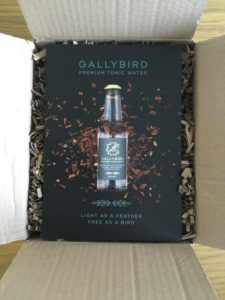 Did you know that some tonic waters have as much sugar in them as a fizzy drink does? With more people watching the calorie count of their drinks, more tonic makers are introducing light versions of their tonic, or making this the centre of their brand. One such brand is Gallybird, who embrace a healthier way of life. Their tonic has no sugar in it, instead they spent two years experimenting in their kitchen in Sussex (hello neighbours!) to make a sugar free, zero calorie, natural tonic water. Instead of sugar, they use Stevia leaf from South America which has been used for centuries and is suitable for diabetics and vegans, as well as containing anti-inflammatory and antioxident properties. So, essentially, it’s good for you. They have designed their tonic to enhance your favourite spirit, rather than overwhelm it.
Did you know that some tonic waters have as much sugar in them as a fizzy drink does? With more people watching the calorie count of their drinks, more tonic makers are introducing light versions of their tonic, or making this the centre of their brand. One such brand is Gallybird, who embrace a healthier way of life. Their tonic has no sugar in it, instead they spent two years experimenting in their kitchen in Sussex (hello neighbours!) to make a sugar free, zero calorie, natural tonic water. Instead of sugar, they use Stevia leaf from South America which has been used for centuries and is suitable for diabetics and vegans, as well as containing anti-inflammatory and antioxident properties. So, essentially, it’s good for you. They have designed their tonic to enhance your favourite spirit, rather than overwhelm it.
Opera Gin
Note: I met the team from Opera gin at Junipalooza and they kindly gave me a sample to try, as always I’ll let you know what I really think.
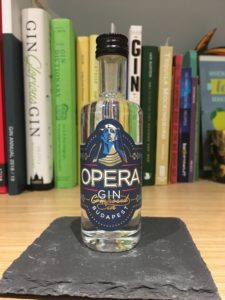 What is Opera gin?
What is Opera gin?
To anyone looking for their next holiday destination, I would recommend Budapest. It’s a lovely city and we had a very fun week there despite falling down the stairs in a ruin pub and spraining my ankle, and falling in the Danube (sprained ankle first). You might wonder why I’m telling you this, but today’s gin comes from that fine city. Fellow WSET student, Balint Damosy (also a lawyer) realised during his training that gin was his passion and spent two years researching and learning about gin, before deciding that launching their own gin was not as insane as they thought. And so Opera gin was born. In April 2018, they received their distilling license to become the first micro-distillery in Hungary, and set up shop in a former cotton factory within the Budapest city walls. They chose to create a traditional London Dry gin as they wanted to create something that was not just high quality, but also true to the spirit. They start with a Hungarian corn spirit before adding standard botanicals: hand picked juniper from the Kiskunság National Park; Bulgarian coriander seeds; angelica; orris root; and liquorice. They then make their gin unique by using citronella grass (which I’ve never come across as a botanical before but feel free to correct me!), lavender, a touch of aniseed and cubeb pepper, and their signature botanical poppy seed. They say this all blends together for a citrus and juniper forward gin that works well with tonic, but also pairs with a dry vermouth to make a crisp martini. So, how does it taste?
Gwyr Rhosili gin
Note: The lovely team at Gwyr gin sent me a bottle to try, but as always I will let you know what I really think.
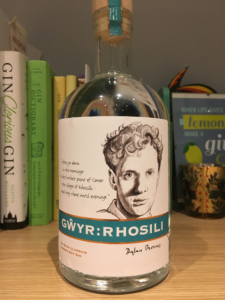 What is Gwyr Rhosili gin?
What is Gwyr Rhosili gin?
If you want to know about Gwyr gin, then I will point you to my posts on their original gin and their Pinwydd edition. Today, however, we are drinking their newest edition to the family, the Rhosili gin. This has been designed with the Dylan Thomas Estate to commemorate the poet’s links with Gower and Rhosili (his body is interred around the coastline in Laugharne). Thomas is most famous for poems such as Do not go gentle into that good night, a poem that has been quoted in numerous shows and films like Doctor Who and Independence Day. So how is this gin different to their others? Where their original gin focuses on pink grapefruit and fennel, the Rhosili edition features foraged gorse flowers, fresh lime zest, sea buckthorn (a botanical that seems to be appearing more and more) and linden flowers. Linden flowers have been used by herbalists for all sorts of things – coughs, colds, high blood pressure and migraines and research has shown that the flowers may have properties that help prevent damage to your liver. Which surely can only be a good thing when added to something that is proven to damage your liver? Please note I am not saying that drinking this is good for you in any way, as always, please drink responsibly. So, moving on, how does it taste?
Whitby Gin
Note: The team at Whitby gin kindly sent me a sample to try, but I will always let you know what I think
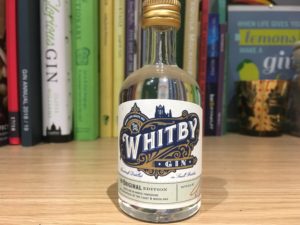 What is Whitby Gin?
What is Whitby Gin?
When I think of Whitby, I always think of Dracula, but it turns out the seaside town in North Yorkshire has more going for it than the place the Count landed in England. When Jess and Luke went on a camping trip to the Outer Hebrides in 2017, they were inspired by the amount of distilleries the islands housed, and Jess wondered why her hometown didn’t have one. Luckily, Jess has a background in business planning, and Luke one in food manufacturing, so they had a bit of a head start on the process. They ordered a still before they even got home and decided on three key botanicals: heather (sustainably sourced from the North York Moors), sugar kelp (from Robin Hood Bay) and honey (bought raw from their local bee keeper). 45 trials later and they had found the perfect combination of botanicals to complement these, including juniper, coriander seed, citrus peels and liquorice root and so Whitby Gin was born. These are added to their copper column stills (Stanley, Stockwell and Scripps, obviously) with their grain spirit and distilled once before hand bottling and labelling their products. Since their launch, they have won a host of awards including winning the Best London Dry Gin (UK) at the 2019 World Gin Awards.
Manly Spirits Coastal Citrus Gin
Note: The Manly Spirits team sent me a bottle to try, but as always I’ll let you know what I think.
 New South Wales is probably most famous for being the state that Sydney lies in on the south east coast of Australia. The Australian gin scene is growing rapidly (so much so that Junipalooza has expanded out there), and Manly Spirits started life in Tasmania in late 2015. Founders David and Vanessa discussed the possibility of opening a distillery and dedicated their time to researching successful distilleries around the world before commencing training with a distillery closer to home. They launched their own distillery in April and utilise the biodiversity that Australia has to offer. Their spirits are hand crafted – they don’t rely on a machine to work out when the head/heart/tail start and end, instead relying on the noses of their team. They forage for their marine botanicals with the help of renowned forager and chef Elijah Holland to ensure that everything is sustainably sourced. Their range now features two vodkas, a whisky currently sat ageing in barrels, a limoncello, a coffee liqueur and three gins. The gin we are trying today is the Coastal Citrus gin that features botanicals such as lemon aspen, sea parsley, meyer lemon, lemon myrtle and fresh coriander leaf. If the name alone didn’t connote that this was citrus led, then the botanical list certainly does. So, how does it taste?
New South Wales is probably most famous for being the state that Sydney lies in on the south east coast of Australia. The Australian gin scene is growing rapidly (so much so that Junipalooza has expanded out there), and Manly Spirits started life in Tasmania in late 2015. Founders David and Vanessa discussed the possibility of opening a distillery and dedicated their time to researching successful distilleries around the world before commencing training with a distillery closer to home. They launched their own distillery in April and utilise the biodiversity that Australia has to offer. Their spirits are hand crafted – they don’t rely on a machine to work out when the head/heart/tail start and end, instead relying on the noses of their team. They forage for their marine botanicals with the help of renowned forager and chef Elijah Holland to ensure that everything is sustainably sourced. Their range now features two vodkas, a whisky currently sat ageing in barrels, a limoncello, a coffee liqueur and three gins. The gin we are trying today is the Coastal Citrus gin that features botanicals such as lemon aspen, sea parsley, meyer lemon, lemon myrtle and fresh coriander leaf. If the name alone didn’t connote that this was citrus led, then the botanical list certainly does. So, how does it taste?